- News
- Reviews
- Bikes
- Accessories
- Accessories - misc
- Computer mounts
- Bags
- Bar ends
- Bike bags & cases
- Bottle cages
- Bottles
- Cameras
- Car racks
- Child seats
- Computers
- Glasses
- GPS units
- Helmets
- Lights - front
- Lights - rear
- Lights - sets
- Locks
- Mirrors
- Mudguards
- Racks
- Pumps & CO2 inflators
- Puncture kits
- Reflectives
- Smart watches
- Stands and racks
- Trailers
- Clothing
- Components
- Bar tape & grips
- Bottom brackets
- Brake & gear cables
- Brake & STI levers
- Brake pads & spares
- Brakes
- Cassettes & freewheels
- Chains
- Chainsets & chainrings
- Derailleurs - front
- Derailleurs - rear
- Forks
- Gear levers & shifters
- Groupsets
- Handlebars & extensions
- Headsets
- Hubs
- Inner tubes
- Pedals
- Quick releases & skewers
- Saddles
- Seatposts
- Stems
- Wheels
- Tyres
- Health, fitness and nutrition
- Tools and workshop
- Miscellaneous
- Buyers Guides
- Features
- Forum
- Recommends
- Podcast
feature
 2022 racing review
2022 racing reviewFrom greenwashing and dropper posts to action-packed racing – the biggest pro cycling stories of 2022
Professional cycling, so the consensus goes, has entered a new golden period of racing. After the tainted excesses of the 1990s and 2000s, and the tactical inertia that infiltrated the Tour de France during the Sky years, the past five seasons or so have seen the sport regain a touch of the carefree magic last witnessed back in the 1980s.
2022, one of the best and most exciting seasons in recent memory, confirmed that cycling’s thrilling new wave is here to stay. The arbitrary boundaries established in the last two decades between climbers, rouleurs, and sprinters, between classics specialists and grand tour contenders, have been smashed to smithereens, replaced by ambitious, leading riders who want to win on any terrain, at any time of the year.
Take Tadej Pogačar, for example. When was the last time you saw the defending Tour de France champion in serious contention for the win at Milan-San Remo and the Tour of Flanders? Ultimately, the Slovenian was undone at the Tour by a rider, Jonas Vingegaard, more of the ilk of the ultra-focused, clinical GC men like Froome or Armstrong, and a team hell-bent on victory in cycling’s biggest race. Despite that setback, I can’t see Pogačar setting aside his other ambitions, or his attacking impulses, to solely focus on targeting the Tour anytime soon, however.
The way races are being tackled is also changing. Conservatism is being chucked out the window in favour of long-range, speculative attacks and intensive, gung-ho team tactics. Depending on the nature of the riders involved and the dynamics of the race, sometimes this newfound tendency for marauding escapes can result in open, unexpected epics – such as Wout van Aert’s mad breakaway to Longwy at this year’s Tour – or they can kill the suspense stone dead (see Evenepoel’s worlds win or Van Vleuten’s destruction of the Tour Femmes peloton in the Vosges for evidence of this chilling effect).
But at least it’s unpredictable, and a lot more interesting than waiting for yet another draggy sprint in Ans at the end of a dreary Liège-Bastogne-Liège.
While 2022 has been another vintage year for racing, it’s also spawned several wide-ranging discussions which extend beyond the action on the roads, from the future of the women’s side of the sport to pro cycling’s obligation to take responsibility for its catastrophic impact on the planet.
As the year draws to a close, here’s our take on the biggest racing stories of 2022…
The comeback of the century: Annemiek van Vleuten overcomes fractured elbow to win dramatic world title
Alex Whitehead/SWpix.com
Let’s kick things off with arguably the most dramatic, jaw-dropping moment of the 2022 racing season: Annemiek van Vleuten’s stunning last-ditch attack to win the world road race title in September, the fitting end to a ground-breaking season that also saw the Movistar leader capture an unprecedented treble, winning the Giro, Vuelta, and the revamped Tour de France Femmes in one glorious stage racing summer.
Van Vleuten’s perfectly timed and expertly executed manoeuvre in the final kilometre in Wollongong was made all the more extraordinary by the fact that the evergreen Dutchwoman spent the entirety of the road race heavily bandaged and nursing a fractured elbow sustained just three days previously in the disaster-filled mixed relay event.
Of course, when it comes to Annemiek van Vleuten, we should all be accustomed to the extraordinary by now.
The 40-year-old’s 2022 season was one of the greatest the sport has ever seen. In fact, just to underline that point, we ranked it third in our definitive (okay, extremely subjective) list of the best individual cycling years of all time.
> From Coppi to Van Vleuten: Cycling’s greatest ever seasons
However, it certainly wasn’t without its fair share of improbable comebacks. After breaking her pubis bone in two places at the previous autumn’s inaugural Paris-Roubaix Femmes, Van Vleuten enjoyed a typically dominant spring that featured wins at Liège-Bastogne-Liège, Omloop Het Nieuwsblad, and the four-day Setmana Valenciana, as well as runners-up spots at Strade Bianche, the Tour of Flanders and La Flèche Wallonne.
A broken wrist in a post-classics training crash in April then threatened to scupper her summer, but Van Vleuten duly responded with another crushingly dominant performance at the Giro d’Italia Donne in early July, where she won two stages, the points classification, and the overall title.
Unipublic/Lino Escuris
At the season’s new showpiece event, the relaunched Tour de France Femmes (more on that below), stomach issues and a subsequent sluggish start – the Movistar rider claimed she was “super close” to quitting the race while devoid of energy in the opening stages – merely acted as an attention-diverting prelude to Van Vleuten’s restoration of the established order in the Vosges, underlined by her utter annihilation of the field on the road to Le Markstein, which secured a historic, and fitting, first yellow jersey win.
A more straightforward triumph at the Ceratizit Challenge by La Vuelta (‘Stage racing in 2022? Completed it, mate’) proved something of an uncomplicated red herring in a season punctuated by comebacks from the brink of disaster.
At the start of a turbulent week in New South Wales for the Dutch national squad (culminating in Mathieu van der Poel’s shocking night-time arrest) Van Vleuten produced – by her lofty standards – an underwhelming individual time trial, finishing seventh, almost two minutes down on compatriot Ellen van Dijk.
And then, during the mixed relay team time trial event three days later, disaster struck. Just seconds after rolling down the start ramp, Van Vleuten hit the deck hard, foiled by a jammed chain.
A hospital visit and fractured elbow later, the peloton’s dominant rider seemed destined instead to fulfil a domestique role in the road race for three-time world champion Marianne Vos.
And so it proved for almost the entirety of the 164km race. On the course’s early climb of Mount Keira – where, surely, in normal circumstances, Van Vleuten would have launched one of her trademark long-distance attacks – the Dutchwoman was unable to painlessly rise from her saddle, and spent the majority of the local laps around Wollongong dangling off the back of the main group, incapable of infiltrating any of the key moves.
Until the race entered the final two kilometres, that is. As the rest of the usually oppressively strong Dutch team uncharacteristically fell back in the race’s final stages, Van Vleuten remained, valiantly clinging to the back of a 13-rider group that coalesced within touching distance of the finishing line.
Right up to that staggering moment with 700 metres to go – when a blur of faded orange flew up the right-hand-side of the road, reinvigorated, defiant, bandaged but unbowed – Van Vleuten’s comeback-laden 2022 had been characterised by her long-held penchant for clinical, long-range moves, designed to dominate, control, and relentlessly smother her opposition and the race.
Alex Whitehead/SWpix.com
But at the end of a race over which she had no control whatsoever, Van Vleuten unleashed what may well be remembered as the defining moment of her storied career. And the most dramatic racing moment of 2022.
Total cycling: Jumbo-Visma’s ruthless destruction of Tadej Pogačar at the Tour de France
Zac Williams/SWpix.com
From one jaw-dropping day of racing to another…
At the start of 2022, you may recall, it seemed as if we were standing, blinking at the dawn of the Tadej Pogačar era.
The nonchalant, tuft-haired part-time rapper had already, by the age of 23 and with two Tour de France wins and victories at Liège-Bastogne-Liège and Il Lombardia under his belt, cemented his status as the undisputed figurehead of the sport’s new generation of young, swashbuckling talent.
The Slovenian’s dazzling if slightly turbulent spring – was that botched sprint at the Tour of Flanders (a case of tactical naivety at best, over-indulgence and arrogance at worst) a portent of things to come? – did little to dispel the notion that we were all living in Tadej’s world, and he could do what he wants with us.
However, no-one seems to have passed on that message to Jumbo-Visma. Chastened by Primož Roglič’s stoppage-time defeat to Pogačar on La Planche des Belles Filles at the 2020 Tour, the Dutch squad spent the next 18 months building a staggeringly strong team of all-rounders, capable of implementing a philosophy borrowed from both Eddy Merckx and the collective-focused ‘total football’ of Johan Cruyff and the 1970s Netherlands team.
> Tour de France review: Jumbo-Visma, at last
Despite Jumbo-Visma’s intensive, pressing tactics – the first fruits of which were found in one-man wrecking ball Wout van Aert’s explosive stage win in Calais – the first week of the Tour went according to script. By the end of stage seven, Pogačar was in the yellow jersey and two stage wins to the good, having stamped his authority on the race every chance he could get.
Chaos, meanwhile, continued to follow Jumbo-Visma around like a bad smell. Roglič’s now-annual date with disaster saw him crash into a haybale that had strayed into the road, dislocating his shoulder, while Jonas Vingegaard – the revelation of the previous year’s Tour – had clung onto his GC chances by the skin of his teeth during the error-strewn cobbled stage to Arenberg.
Then the Alps happened – and everything we assumed about the trajectory of cycling over the next decade changed in a flash. After years of being at the mercy of chaos, Jumbo-Visma finally turned the tables, wreaking uncontrollable havoc on the peloton, and in particular an unsuspecting Pogačar.
A.S.O., Charly Lopez
On the Col du Télégraphe and Col du Galibier on stage 11, they set a new template for grand tour racing in the 2020s. Vingegaard and Roglič (who by just staying in the race, injured but close enough on GC to keep Pogačar’s faltering UAE Team Emirates squad on high alert, swung the momentum irrevocably in his younger teammate’s favour) unleashed attack after attack on the two-time defending champion, softening him up bit by bit, indulging his seemingly irrepressible racing instincts to the point of cracking.
And crack he did – Vingegaard’s final move on the Col du Granon was as devastating as it was unexpected. Pogačar, on the other hand, was glued to the road, his jersey flapping open, youthful exuberance giving way – for arguably the first time – to grim, vain desperation.
Whether the Slovenian’s collapse in the Alps will precipitate – like another wunderkind who cracked on the Galibier while seemingly on the cusp of an epoch-defining career, Jan Ullrich – an abrupt and unexpected changing of the guard at the Tour de France is, of course, unknown. (And in any case, Pogačar’s Il Lombardia triumph in October shows there’s more to life than the Tour.)
Zac Williams/SWpix.com
But, rather than heralding the dawn of a new age dominated by one overpowering presence, the new rivalry that emerged at the 2022 Tour between Vingegaard, the cool, consummate stage racer, and Pogačar, the explosive, impulsive all-rounder – captured in its infancy by their respect-filled handshake on the descent of the Col de Spandelles – may well come to define a new era of grand tour racing (and that’s before we even get to a certain Remco Evenepoel).
And the Tour, and cycling, will be all the better for it.
Climate protestors state their case at the Tour – but is anybody listening?
A.S.O., Aurelien Vialatte
2022 – the year of the great sportswash.
As the rest of the world focused on that month-long winter sportswashing exercise in Qatar (otherwise known as the World Cup), cycling was forced to reflect on its own, often questionable, relationship with the outside world.
> Cycling's most controversial sponsors
And while pro cycling can certainly give Gianni Infantino a run for his money when it comes to cosying up to dodgy regimes – think of your favourite riders racing in the colours of Bahrain or the UAE, or the upcoming road world championships in Rwanda in 2025 – one word dominated this year’s unusually hot summer: greenwashing.
The vast gulf that lies between the green, healthy, and potentially world-changing activity of riding your bike and the mammoth, fuel-guzzling world of professional cycling, with its unruly calendar of far-flung races and huge cavalcade of press, organisation, team, and plastic-tat throwing publicity vehicles, was laid bare on stage ten of this year’s Tour de France to Megève.
With 36 kilometres to go, EF Education-EasyPost’s Alberto Bettiol was out front on his own when the race was brought to an abrupt halt by a group of protesters who sat tied to each other across the road, blocking the race’s path, while setting off flares.
The protest, which forced the stage to be paused for over ten minutes, was quickly claimed by the French environmental activist group Dernière Rénovation, who accompanied a photo of the demonstration on their website with the caption: “Non-violent disruption is our last chance to be heard and avoid the worst consequences of global warming.”
Some of the eight protesters also wore t-shirts emblazoned with the slogan “We have 989 days left”, in an attempt to highlight the urgent need for governments to act on the climate crisis.
One of the activists involved in the demonstration, 32-year-old Alice, wrote: “I would prefer not to come to this. I would rather be with my grandfather, be quiet on my sofa watching the Tour de France, while the government does its job. But this is not the reality.
“The reality is that the world which the politicians are sending us towards is a world in which the Tour de France will no longer be able to exist. In this world, we will be busy fighting to feed ourselves and to save our families. Under these conditions we will face mass wars and famines. We must act and enter into civil resistance today to save what remains to be saved.
“What do you expect from me? That I stay on the roadside watching my life go by like I watch cyclists go by? No, I decided to act and interfere to avoid the worst episode of suffering and create a new world. Because everything can still change.”
As noble as Dernière Rénovation’s aims seemed to be, not everybody was listening to the message. 2012 Tour winner Bradley Wiggins, commentating from the back of a motorbike for Eurosport-GCN, branded the protesters “imbeciles” for, presumably, briefly disrupting the most important cycling event in the world for something as trivial as the future of the planet.
The Tour’s organisers were even blunter – members of the police and ASO manhandled the protesters off the road, while race chief Christian Prudhomme dismissed the activists’ aims on TV later that evening.
ASO certainly talks a good game when it comes to climate change. But their actions – taken during one of the hottest Tours in recent memory, where water tankers were deployed (rather vainly) to cool down the baking roads to allow the peloton to safely pass – don’t seem to chime with their words.
Beyond the Tour, that green message also seems to be falling on deaf ears.
British Cycling’s controversial eight-year sponsorship deal with oil giant Shell went down like a jiffy bag to the south of France with the governing body’s members, prompting a wave of cancelled memberships and forcing Sir Chris Hoy into a mealy-mouthed and rather unconvincing argument that the arrangement could “put cycling on the agenda” with Shell. Right…
> British Cycling and Shell: THAT very controversial deal discussed
Meanwhile, when Filippo Ganna sensationally broke the Hour Record in early October – perhaps the greatest sporting achievement of the year and a testament to the pure power and ability of human beings – the Italian was told by his team, the petrochemicals giant Ineos, to pose alongside one of the company’s earth-destroying, cyclist-endangering 4x4s.
Credit: Ineos Grenadiers
Cycling, as we all know, can help change – and save – the world. Someone just needs to remind the people running the sport every so often.
A new dawn or the culmination of years of hard work? The Tour de France Femmes returns with a bang
The 2022 Tour de France Femmes avec Zwift, the most eagerly anticipated race of the year, was a long time coming.
A.S.O./Fabien Boukla
Following the demise of the Grande Boucle – the last race that could lay claim to be a women’s Tour de France – in the late 2000s, a campaign was launched by pro cyclist, film maker, and writer Kathryn Bertine, who was later joined by Emma Pooley, Marianne Vos, and triathlete Chrissie Wellington, to convince Tour organisers ASO to put their weight behind a successful and sustainable grand tour.
ASO’s initial response – the creation of La Course by Le Tour de France in 2014 – felt at times like more of a concession than a statement of intent, a bolted-on afterthought rather than a sustainable plan for future growth.
Nevertheless, La Course did at least galvanise the campaign for a proper, fully backed stage race under the Tour de France umbrella.
> Tour de France Femmes preview: everything you need to know about the long-awaited race
Speaking ahead of this year’s long-awaited Tour de France Femmes, the first edition of the race in its new, relaunched format, former world champion Lizzie Deignan told road.cc: “Each year the pressure has built up to put on a women’s race, so the previous ‘token gesture’ of a day’s race is now an eight-day stage race.
“The Tour de France for the men is a world-famous sporting event that almost everyone has heard of, and a massive opportunity and platform that female cyclists have been denied to date. This is an exciting opportunity and a pivotal moment for us, as it will grab the attention of a worldwide audience.”
And, it’s safe to say, the women’s peloton certainly made the most of the opportunity.
The varied route, designed by director Marion Rousse and featuring eight stages across north-eastern France, lent itself to tactical intrigue, suspense, and exciting racing.
Zac Williams/SWpix.com
Stage four’s foray onto gravel brought drama and chaos, while Cecilie Uttrup Ludwig’s brilliant, come-from-behind sprint in Épernay – after a torrid opening few days for the Dane’s FDJ-Suez-Futuroscope team – reinforced her position as one of the sport’s darlings and its most entertaining interviewee. Meanwhile, Annemiek van Vleuten’s stunning success in the Vosges mountains, after a battle with illness earlier in the week, provided the race with an inspiring, if ultimately predictable, climax.
But it was the success of the greatest rider of all time, Marianne Vos, that perfectly encapsulated this week-long celebration of women’s cycling.
Vos’s two stage wins and five days in the yellow jersey proved not only fitting for a rider who has given the sport so much during her long, storied career, but for women’s cycling itself. This was a case of cycling’s most iconic rider finally gracing the stage she has deserved for almost two decades. Vos fought long and hard for this moment, and she deserved every second of it.
Zac Williams/SWpix.com
Of course, while we all got carried away with the euphoria of a fourth week of racing in July, the Tour Femmes isn’t perfect, and we should be cautious when evaluating what essentially amounts to a spot of late-stage band wagoning by ASO.
First, inequality still strikes at the heart of the relaunched women’s Tour. For starters, can an eight-day race really be defined as a ‘grand tour’? And even if there are plans in place to eventually expand the race to two, or even three, weeks, money remains an ever-present issue: Van Vleuten received €50,000 in prize money for her career-defining triumph, a tenth of what her male equivalent Jonas Vingegaard earned for winning the men’s Tour.
Another measure of the gulf between how ASO views its male and female events lies most glaringly in the lack of line-to-line TV coverage for the Tour Femmes. Van Vleuten blew the field to shreds on the Petit Ballon, the first of stage seven’s three mammoth climbs – it’s just a shame no-one was able to see it.
It’s clear that the women’s peloton, which has leapt forward in terms of the quality of races and the levels of professionalisation since the last Grande Boucle in 2009, deserves it place on cycling’s biggest stage. It’s now up to ASO to make sure that the curtain doesn’t fall again.
Dropper post mania: Matej Mohorič’s MTB-inspired Milan-San Remo descent
Back in March, the cycling world lost its collective mind when Matej Mohorič, channelling his inner Sean Kelly, bombed down Milan-San Remo’s iconic, technical Poggio descent, almost crashing on at least two occasions, to take a thoroughly deserved victory in the first monument of the season.
I have to admit, I’m still terrified watching the highlights now…
Of course, all the post-race talk focused on not just the Slovenian’s death-defying descending ability, but on a special piece of equipment developed by his Bahrain-Victorious team especially for San Remo and the Poggio: a dropper post plucked straight from the world of mountain biking.
In an interview with the road.cc podcast, Mohorič explained that his victory was the result of months of planning from his team, and the initial idea to use a customised bike complete with a Fox Transfer SL dropper post, specifically for Milan–San Remo, was put forward by Bahrain’s head mechanic Filip Tisma.
“We tested different ones, different lengths. We started to test with a 120mm dropper post… the gap was too much,” the 28-year-old told us in March.
“We went for a smaller one, a 60mm dropper post and that was just perfect. It helped me to lower the centre of gravity to handle the bike, but still to remain seated on the saddle. I was looking forward to the race and experiencing the features in the race.
“In training it seems to me that it made a huge impact, and then in the race it really confirmed it.”
While the use of the dropper post was garnering all the attention, there were other subtle changes made to Mohorič's Merida Scultura, a bike chosen over the more aero Merida Reacto for its round seatpost; and, he said, its ability to be adapted to take larger disc rotors, with Mohorič speccing a 180mm rotor on the front and 160mm at the rear to improve braking power.
Even more fascinating was the mention of “special” bearings added to his Vision Metron wheels, which Mohorič said would “apparently” result in “zero [losses] of drag from the bearings”.
“It’s a secret I think,” he said, one eye on a Belgian classic taking place on his TV in the background. “It’s a thing they’re developing and I think they’re planning to put it on the market.
“It’s a special ceramic bearing that I think has a different mechanism of the bearings being installed into the hub. It’s similar to the trains they use in Japan that float in the air.”
Let’s just say our tech nerds had a field day with all this insider gossip.
Sprintcycling
Of course, even with all the marginal tech gains in the world, Mohorič still had to remain upright while bombing down the Poggio, which is easier said than done – though the dropper post apparently even had a role in preventing a crash during the descent’s most heart-stopping moment, as the Bahrain-Victorious rider was forced to bunny hop out of a ditch.
“With the way that I was attacking the corners I think I would probably choose not to follow myself on that descent!” he laughed. “Even when I jumped out of the ditch, the lower saddle enables you to do it easier. The saddle is not in your way, it’s almost like on a mountain bike. It's easier to bunny hop when you have your saddle lower.”
However, despite claiming at the finish in San Remo that may have “destroyed cycling” thanks to the proven success of his dropper post, Mohorič admitted earlier this month that he’s not convinced that the new tech will catch on in the peloton.
“I didn’t see so much enthusiasm about using it in road races after I used it successfully in San Remo,” he said.
“But I still believe it makes a difference. It makes the bike easier to control and lowers the centre of gravity. If there’s a chance, I’ll definitely use it again in some races, but I don’t know what the others will do.”
Who knows what kind of equipment we’re going to see on display come the 2023 classics…
Mark Cavendish and the never-ending transfer saga
Alex Whitehead/SWpix.com
In a transfer saga worthy of being reported on by Jim White in a yellow tie, Mark Cavendish’s ill-fated move to the now-defunct former B&B Hôtels-KTM set-up has dominated the road.cc live blog during this winter’s silly season – and the mystery surrounding Cavendish’s next team still shows no signs of slowing down as we enter 2023.
37-year-old Cavendish, one victory shy of surpassing Eddy Merckx as the Tour de France’s most prolific stage winner, was controversially left out of Quick-Step Alpha Vinyl’s Tour de France squad earlier this year in favour of Fabio Jakobsen, who secured an emotional victory on stage two of the Tour into Nyborg, less than two years after his potentially career-ending crash at the Tour of Poland.
Following Cavendish’s Tour omission, a decision made just days after the in-form sprinter won the British road race championships, the Manxman soon became linked with a move to Jérôme Pineau’s B&B Hôtels squad, which was seemingly on the brink of securing a big-money sponsorship deal with a globally recognised brand (Amazon and Carrefour were among the names touted).
Cavendish, a French team, and the chance of making history at the Tour – what’s not to love?
A.S.O./Pauline Ballet
However, despite the former world champion reportedly reaching a verbal agreement with Pineau, following the last-minute cancellation of what was expected to be the revamped team’s big reveal at the end of October – due to the absence of what Pineau said was some of the project’s “main stakeholders” – doubts began to emerge over the squad’s supposedly rosy future.
In October, the team missed the deadline to apply for a ProTeam licence (in effect, freeing their riders to negotiate with other squads), and were forced to seek a special extension from the UCI in order to secure the funds required to continue in the peloton.
By November, Pineau remained optimistic that “a last major sponsor” would come on board, and that Cavendish would remain as the project’s figurehead (and, presumably, chief sponsor attractor).
> Mark Cavendish’s future uncertain after team boss tells riders to look elsewhere
And then, with only weeks to go until the new season, Pineau’s precarious house of cards came crashing down at the start of December, not only scuppering plans for an expanded, ambitious WorldTour team, women’s team (to be led by French champion Audrey Cordon-Ragot), and development squad, but the whole set-up altogether, forcing French stalwart Pierre Rolland to call time on his career and leaving several riders and staff without employment for 2023.
So, what’s next for Cavendish? Well, with Tour stage win no. 35 still very much an active goal for the 37-year-old, and with spaces on teams capable of riding the Tour now extremely limited, the former world champion was rumoured to have travelled to Calpe before Christmas, where he reportedly met up with Alexander Vinokourov’s Astana team during their pre-season training camp.
A square peg in a round hole perhaps, but surely at this stage any team – and especially one that could fulfil his ambition of making Tour de France history – will do for Cavendish, who has remained studiously tight-lipped throughout this whole sorry saga.
As Jim White would say on deadline day, the clock is ticking… Where’s Harry Redknapp when you need him?
The kids are alright
@cauldphoto/Specialized
It’ll come as no surprise to anyone with even a passing interest in the racing scene in recent years, but it turns out that young people are rather good at professional cycling.
The trend for younger and faster in the pro peloton, accelerated by the arrival of Egan, Tadej, and the rest in the late 2010s, continued at pace this year.
Leading the way, of course, was the original boy wonder, 22-year-old Remco Evenepoel, who fully delivered on the promise, and burden, placed upon him by an expectant Belgian public this year, winning his first monument in the spring with a stunning solo ride at Liège-Bastogne-Liège, before securing his second Clásica San Sebastián (his first victory in that Basque summer classic came when he was still a teenager in 2019).
And then the floodgates opened. Banishing the ghosts of the previous year’s Giro d’Italia, Evenepoel finally confirmed his credentials as a serious three-week contender, cruising to victory at the Vuelta a España after Primož Roglič crashed out.
That Vuelta win, the first overall grand tour victory for Belgium since Johan De Muynck’s Giro triumph in 1978, set the cycling-mad country into Remco-mania, a state of delirium only heightened by his suffocatingly dominant performance at the road worlds in Australia two weeks later.
@cauldphoto/Specialized
> Remco Evenepoel solos his way to World Championship victory
While we may not see a showdown between a rainbow bands-wearing Evenepoel and Pogačar (who just turned 24 in September, remember) and Vingegaard (26) at the Tour next year – the Quick Step rider is heading for a rematch with the Giro instead – one thing is clear: we’re entering a golden age of grand tour racing.
Away from the battle for grand tour supremacy, 22-year-old Eritrean sensation Biniam Girmay emerged as a serious contender to Wout van Aert and Mathieu van der Poel’s supremacy in the classics and in the hunt for stage wins.
The Intermarché-Wanty-Gobert Matériaux rider cemented his status as a future – and current – star of the sport in late March with a superb victory at Gent-Wevelgem, the first ever African triumph at a prestigious Belgian classic.
Zac Williams/SWpix.com
Girmay followed that spot of history making with another ground-breaking success for Eritrea at the Giro d’Italia, where he outsprinted Van der Poel to win stage 10 into Jesi – before promptly exiting the race after a close encounter with an unruly prosecco bottle cork on the podium. Judging by his sensational spring and consistent return to racing in the autumn, it won’t be too long until Girmay is popping open more post-race bottles of bubbly (hopefully without incident next time).
Zac Williams/SWpix.com
> Biniam Girmay out of Giro d’Italia with eye injury after bizarre podium prosecco incident
2022 also proved an undoubted success for Britain’s fledgling cycling talent. While elder statesman Geraint Thomas showed that there’s plenty of life in the old Welsh dog yet, finishing an impressive if distant third at the Tour, his young pretender, Tom Pidcock, underlined both his undoubted strength and versatility, while Fred Wright and Ben Turner impressed on the cobbled lanes of Belgium.
In January, the then-22-year-old Pidcock became the first rider from the UK to win the elite men’s event at the world cyclocross championships, attacking halfway through the race to solo to a confident, dominant victory in Fayetteville, Arkansas.
Zac Williams/SWpix.com
In July, the Yorkshireman cemented his status as Britain’s new grand tour hope with a storming solo ride to win atop one of the Tour de France’s signature climbs, Alpe d’Huez, beating four-time Tour winner Chris Froome in the process. Pidcock’s win on the Alpe was aided by a breath taking, virtuoso descending performance on the Col du Galibier earlier in the stage, described by David Millar as “poetry in motion”.
Cor Vos/SWPix
> How Fast!? We take a look at Tom Pidcock's Alpe d'Huez conquering Strava file
And to cap it all off, the Ineos Grenadiers rider won the European XC mountain bike championships a month later, before going on to star in this winter’s cyclocross campaign. Talk about an all-rounder.
Zac Willims/SWpix.com
Another British all-rounder on the road – or should I say muddy knoll? – to the top is Zoe Bäckstedt. The 18-year-old Welsh wonder, arguably the most exciting young talent in women’s cycling right now, ended her term in the juniors in style, taking the much-coveted road race and time trial double at the Wollongong worlds, while also picking up rainbow jerseys at the junior cyclocross and track worlds. Not too shabby, either.
With top-tier teams increasingly turning to the junior ranks in an attempt to find the next Remco Evenepoel, 2023 may see yet another wave of fresh new talent snapping at Pidcock and Bäckstedt’s back wheel…
What are your predictions for 2023? Will the trend towards all-out attacking at the biggest races continue? And can anyone find a way to stop Jumbo-Visma and Van Vleuten at the Tour de France? Let us know in the comments!
After obtaining a PhD, lecturing, and hosting a history podcast at Queen’s University Belfast, Ryan joined road.cc in December 2021 and since then has kept the site’s readers and listeners informed and enthralled (well at least occasionally) on news, the live blog, and the road.cc Podcast. After boarding a wrong bus at the world championships and ruining a good pair of jeans at the cyclocross, he now serves as road.cc’s senior news writer. Before his foray into cycling journalism, he wallowed in the equally pitiless world of academia, where he wrote a book about Victorian politics and droned on about cycling and bikes to classes of bored students (while taking every chance he could get to talk about cycling in print or on the radio). He can be found riding his bike very slowly around the narrow, scenic country lanes of Co. Down.

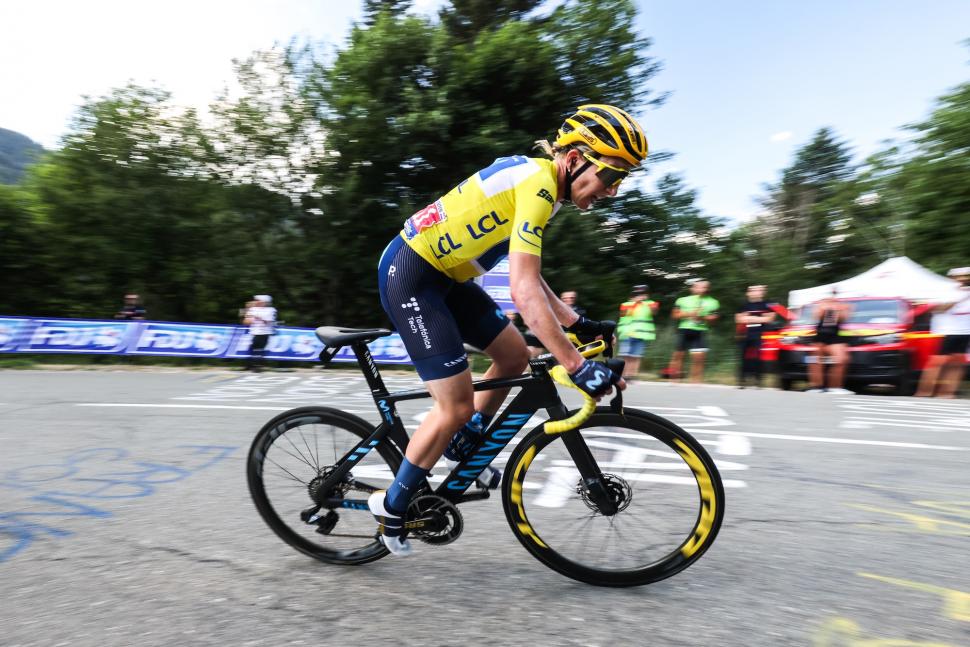
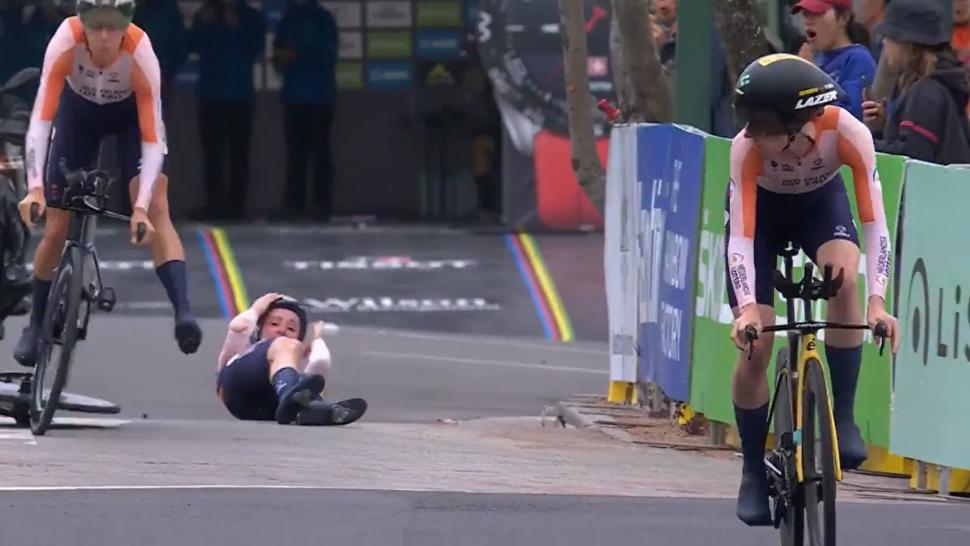
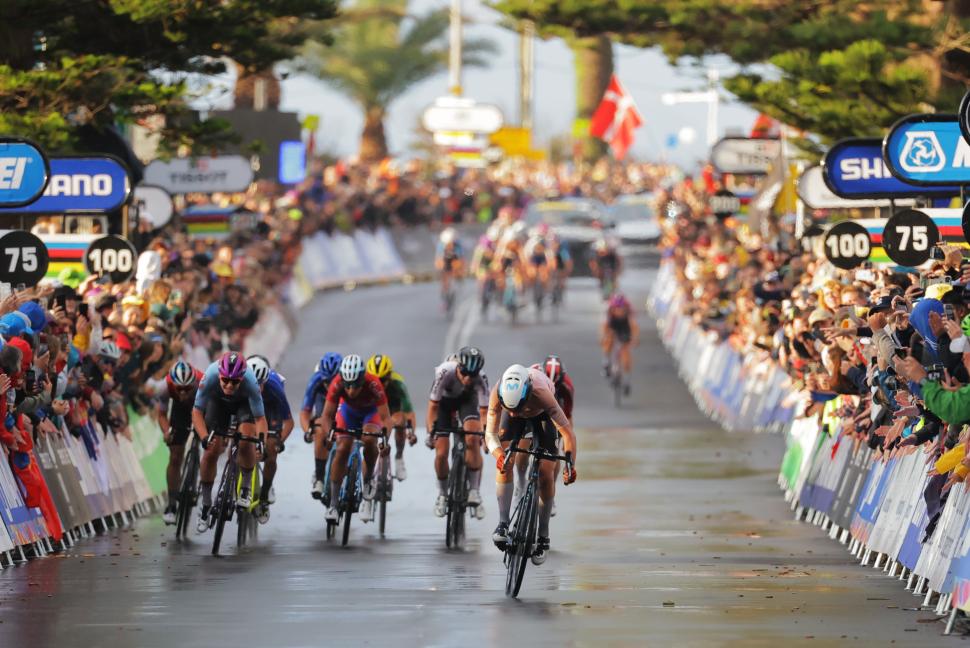
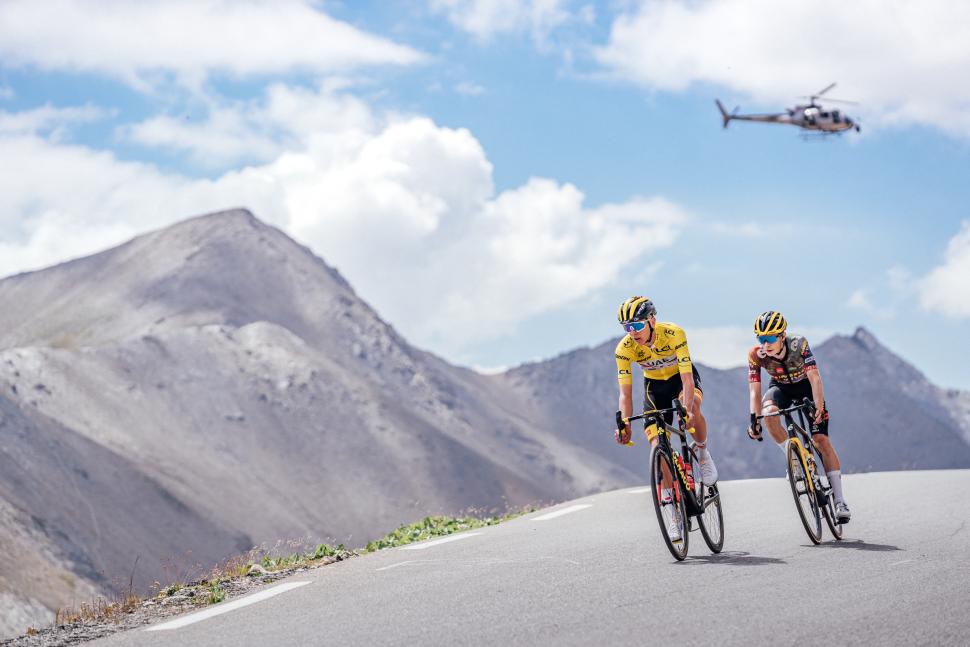

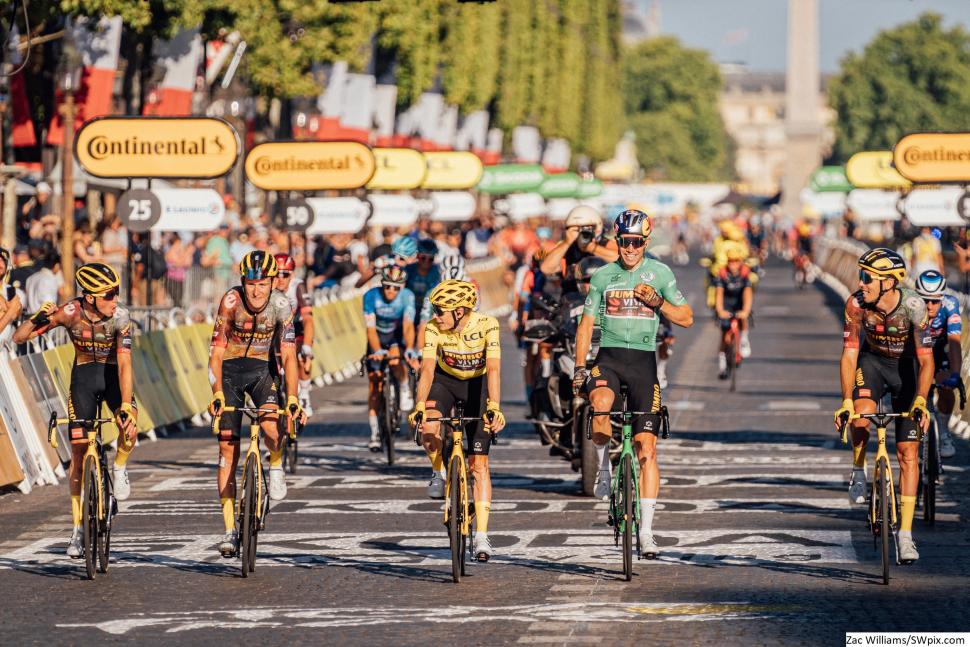
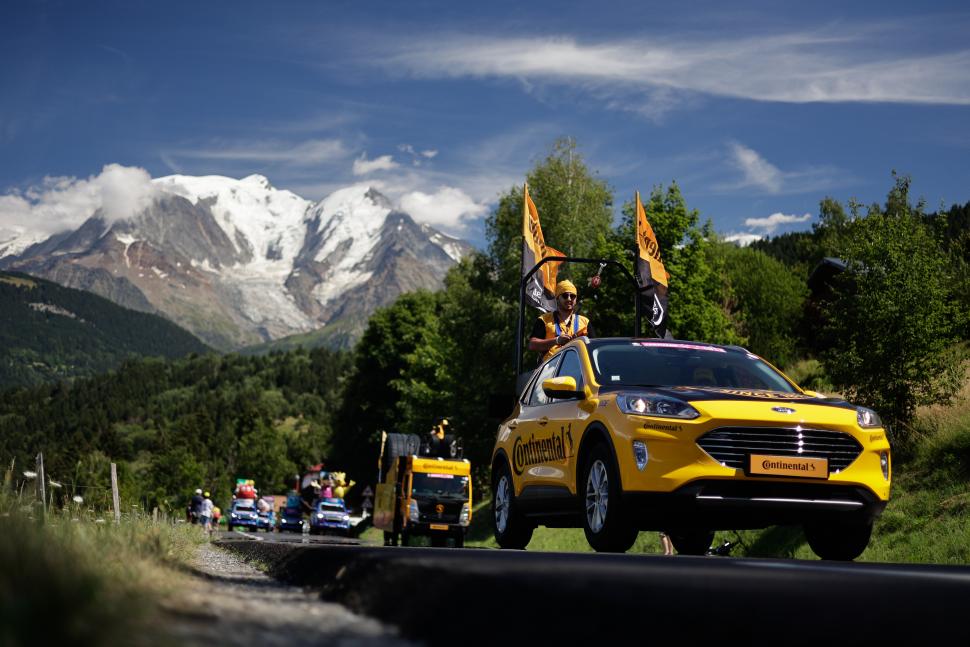
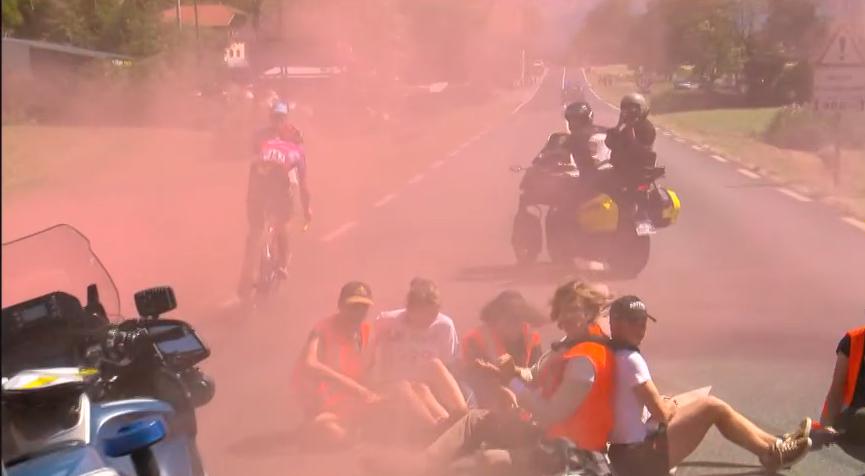

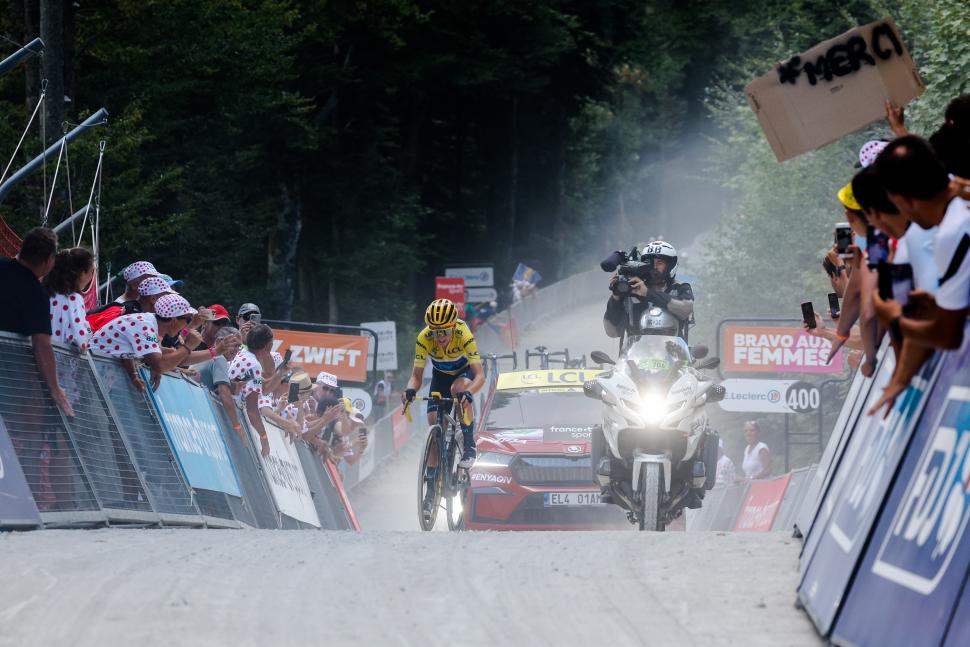
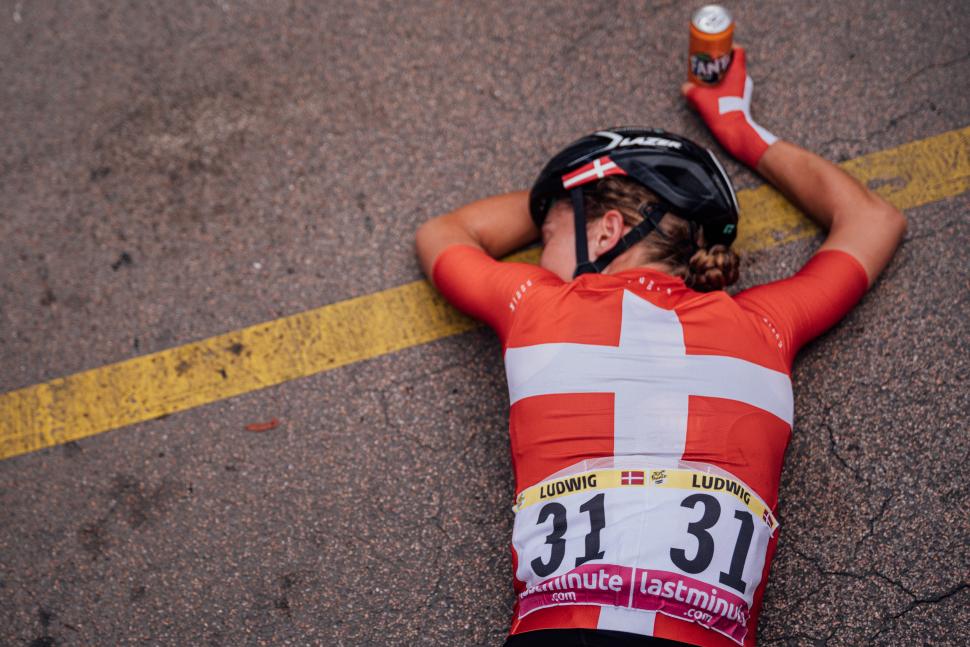
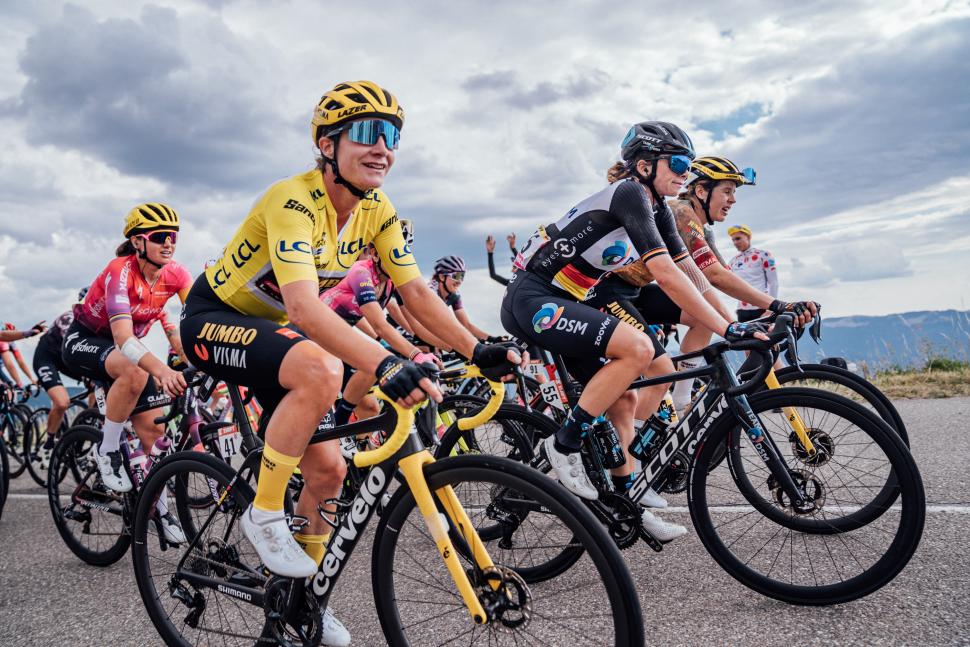

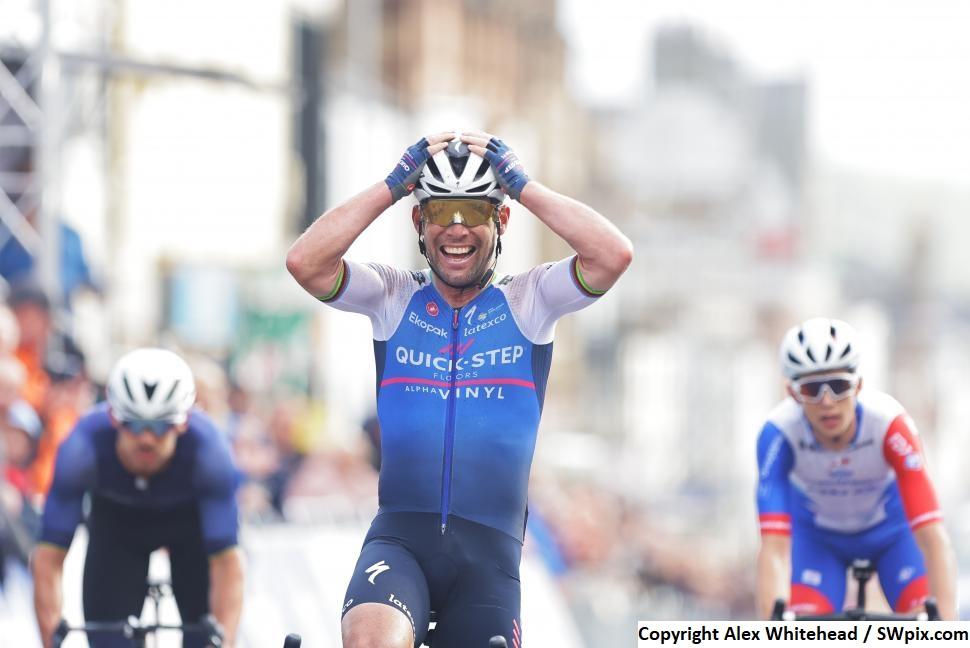


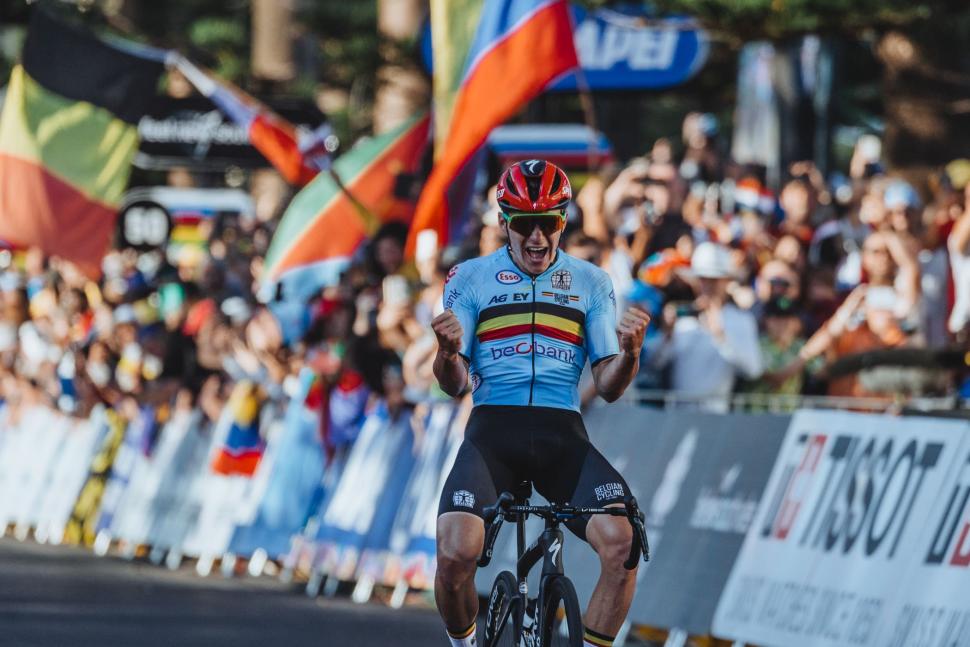
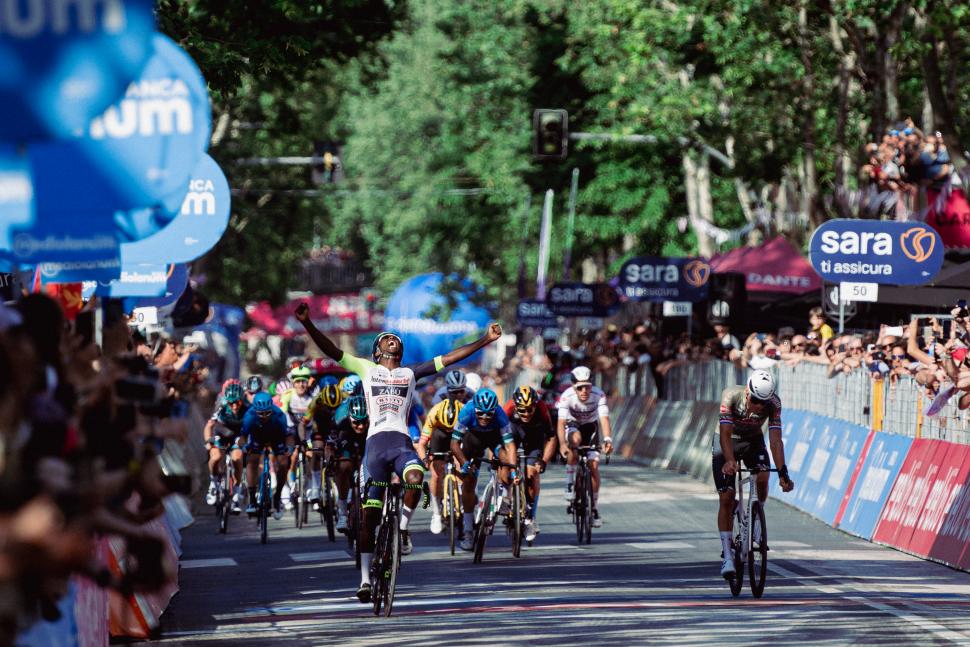
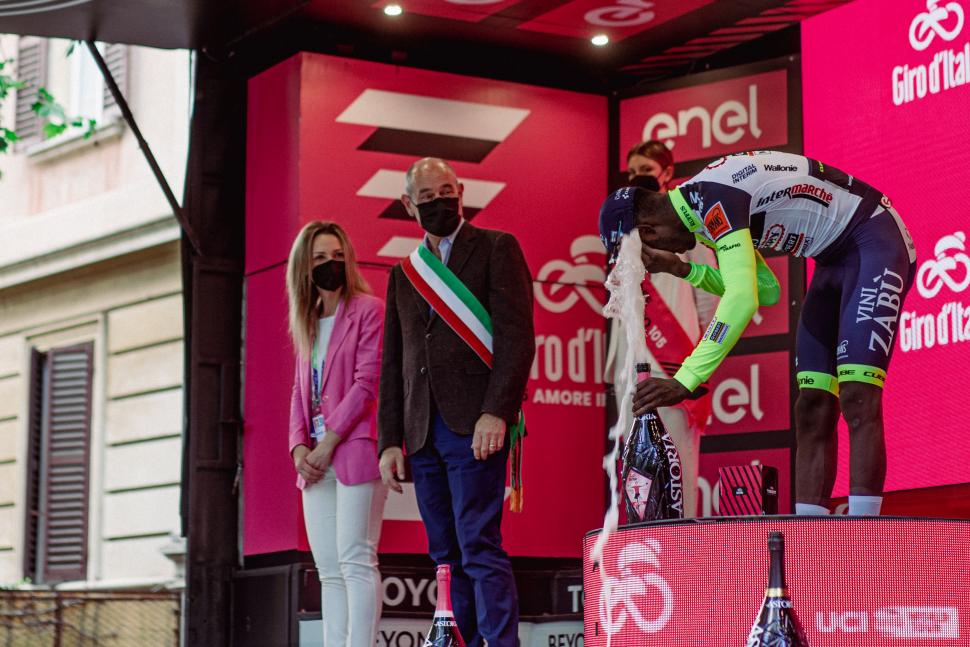
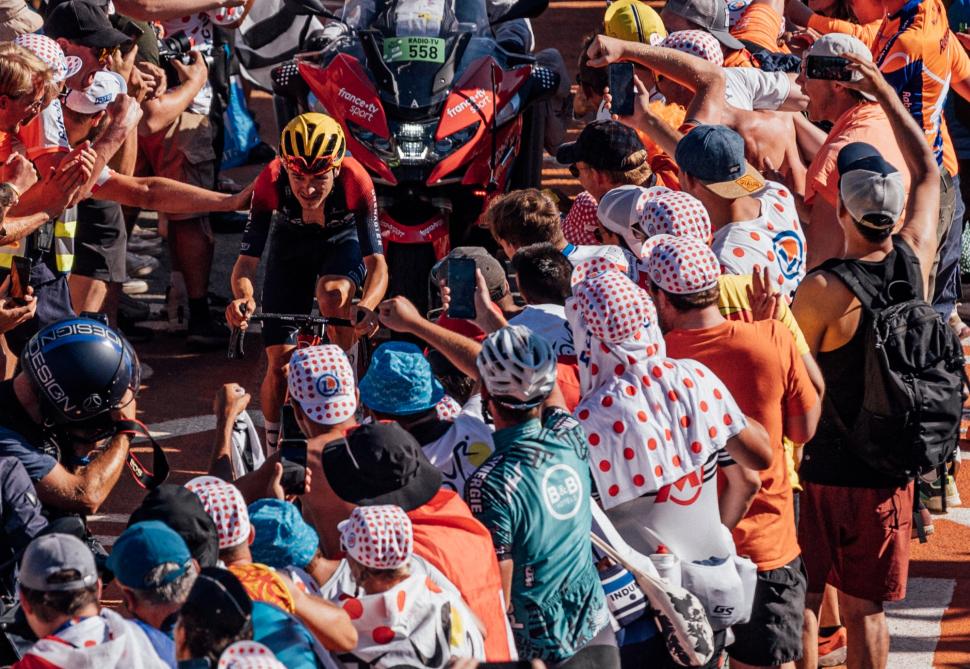

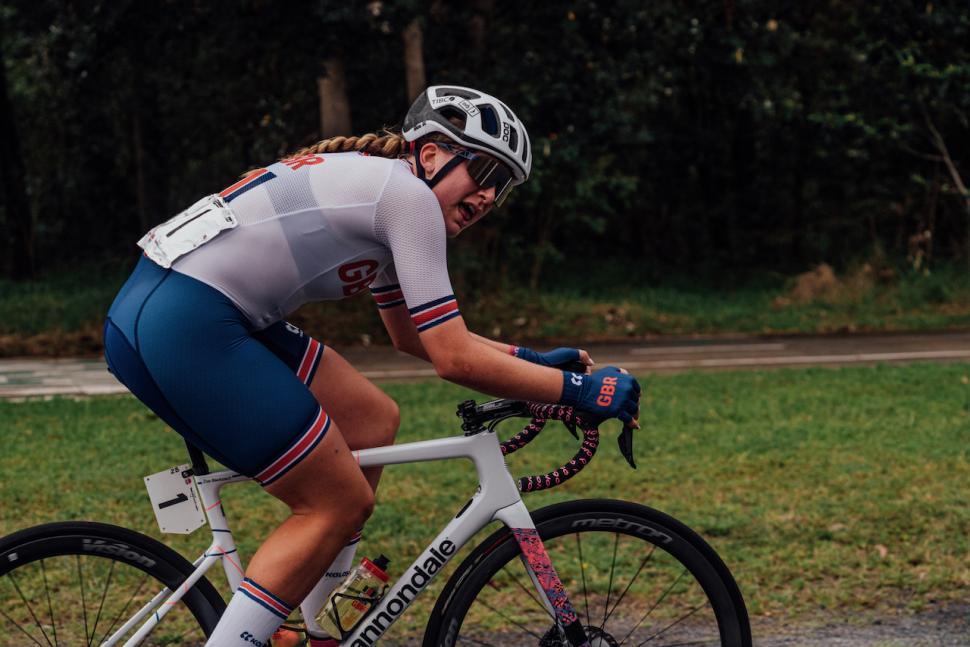
Not leaves on the line but on the road....
Perhaps some of the difficulty here is in the language - what we're comparing with what?...
We're decades behind in the UK of being able to do this, Utrecht works because the Dutch prioritised safe cycling infra, which makes convenient...
Motonormativity. You can't make things safe for pedestrians and cyclists if it inconveniences drivers, even by the tiniest amount: they're just...
I experience this quite often when out running. I follow the guidelines, running towards traffic and keep hard right. I am very visible too but...
Not enough to warrant having the role exist at all would be my guess.
Seems expensive for what it is. ...
Regarding fit, from my experience shoes seem to follow the same nonsense in sizing as a "race" cut clothing - I generally have to upsize one or two...
Except you'll probably find that the factory selling it on Aliexpress are managing that low price by "borrowing" the original design without credit...
It can be 50/50 whether the articles are paywalled or not, even one that looks free can disappear, but you can switch between the EADT &...